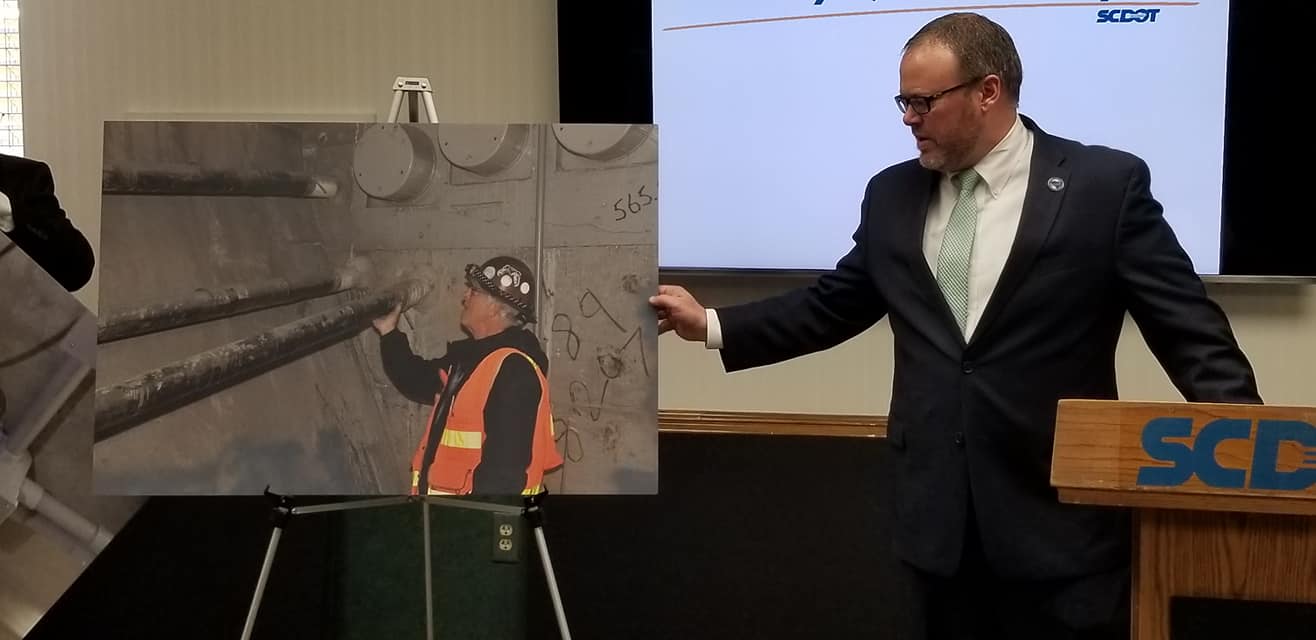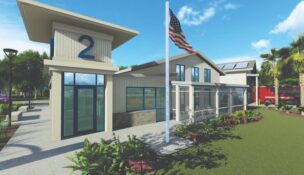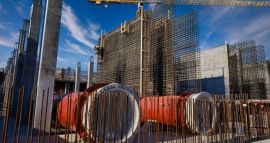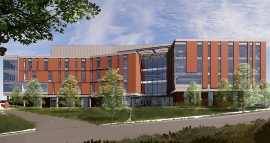DOT plans numerous repairs for Wando bridge
Staff //January 28, 2019//
 The James B. Edwards Bridge will undergo numerous repairs over the next 15 months as the S.C. Department of Transportation continues to battle corrosion caused by water seeping into the structure.
The James B. Edwards Bridge will undergo numerous repairs over the next 15 months as the S.C. Department of Transportation continues to battle corrosion caused by water seeping into the structure.
DOT expects to begin additional repair work this spring and finish sometime in 2020. Some of the work will involve lane closures during two weekends, likely in the fall. Crews would close all but one lane in each direction during that work. Closures would likely be at night and not during typical rush hour times, officials said.
The Interstate 526 bridge spans the Wando River and serves as a major route for Lowcountry drivers traveling between Mount Pleasant and North Charleston or to Interstate 26.
“With any bridge, you always have to fight the elements. When you get into a coastal region, those elements increase. … We just have to stay diligent in our inspection program and our maintenance program,” said LeLand Colvin, DOT’s deputy secretary for engineering, during a news conference on Friday.
The closure
Crews have been inspecting the bridge daily since issues were first discovered in October 2016. One such inspection last May revealed an internal cable on the westbound bridge had snapped, prompting DOT to close the bridge on May 14.
Investigations revealed that water had seeped through the bridge deck, causing corrosion and eventually breaking the cable.
DOT crews replaced the snapped cable and added an additional cable for support for a total of nine cables on the westbound bridge at the time. Workers also replaced the surrounding damaged concrete and sealed the area.
The bridge reopened to traffic on June 2, helping to alleviate intensifying congestion and commuter frustration in the region.
The bridge still undergoes daily walk-through inspections.
Repairs since reopening
Bridge repairs have been ongoing since June, with more planned.
Workers added another support cable within the westbound bridge for a total of 10 internal cables. Both the eastbound and westbound bridges now have power inside, enabling inspectors, engineers and construction crews to better see the interior and run tools without using generators and extension cords.
The bridges also have cameras and microphones inside to alert DOT officials of any major issues.
“These provide real-time monitoring for SCDOT. … So, if another cable were to snap, we would pick that up through the microphones and that would actually send out a text to our structural engineers both here in Charleston, as well as Columbia, and we have protocols in place if that were to happen,” Colvin said.
Those camera systems will eventually be replaced with a more sophisticated system, Colvin said.
The agency has spent $6 million on the repairs thus far.
What’s next
DOT officials, national certified bridge inspectors and an international firm specializing in bridges have been analyzing and inspecting the bridge since May, yielding a 2,800-page report.
More than 27 miles of cable inside the bridge underwent testing to reveal any corrosion within the concrete around the cables, with the cables themselves or with any of the joint sections — where the columns holding up the bridge meet the structure itself.
The analysis recommends 14 major repairs to improve the bridge’s safety, durability and longevity.
DOT said it will pursue nine of those recommendations over the next 15 months, with plans to complete the remaining five after that time. The agency will solicit bids on March 12 for work on the first nine repair projects. The contract amount is unknown at this time, officials said.
Some of the report’s recommendations include replacing two more internal cables on the westbound bridge and adding two new internal cables on the eastbound bridge for redundancy. It also recommended sealing the plastic conduits that protect the internal cables on both bridges to prevent water intrusion and better anchoring the cables into the bridge.
Colvin said one of the recommendations will be a “major joint repair” for two joints within the eastbound and westbound bridges. The report said those joints are deteriorating, requiring joint repairs, full deck repairs and deck sealing. All joints will be inspected and repaired as needed.
DOT expects to begin repair work this spring and finish sometime in 2020.
“This bridge is safe, and we intend to keep it safe,” Colvin said.
i

















